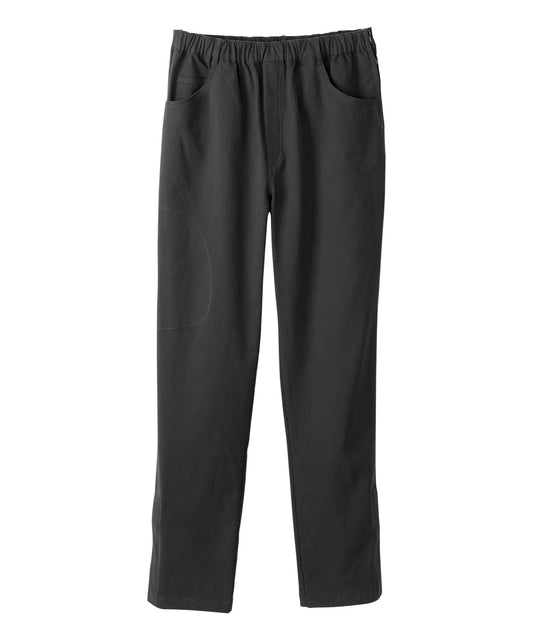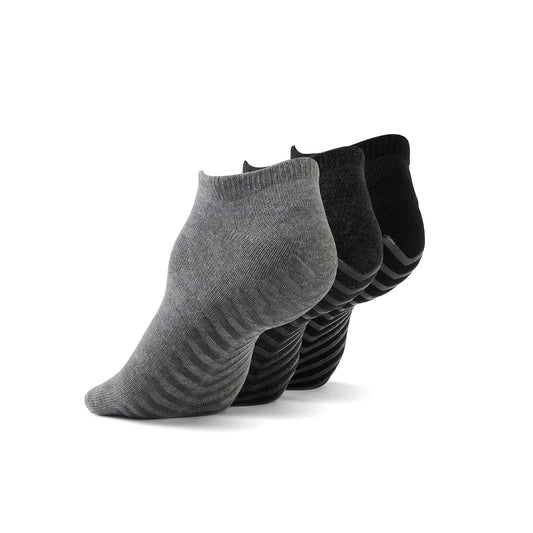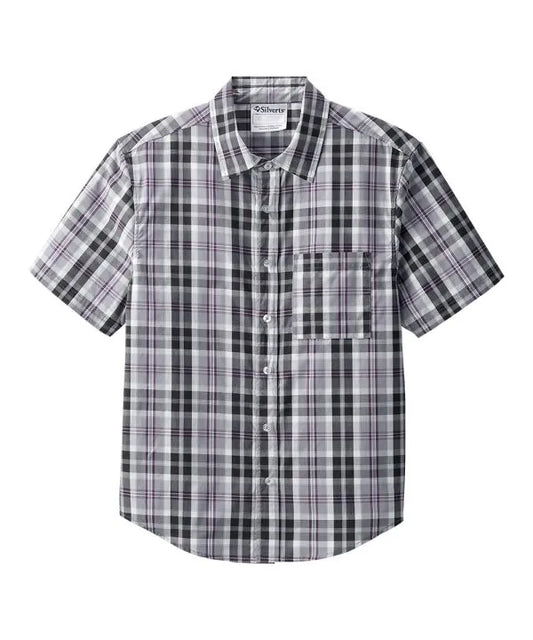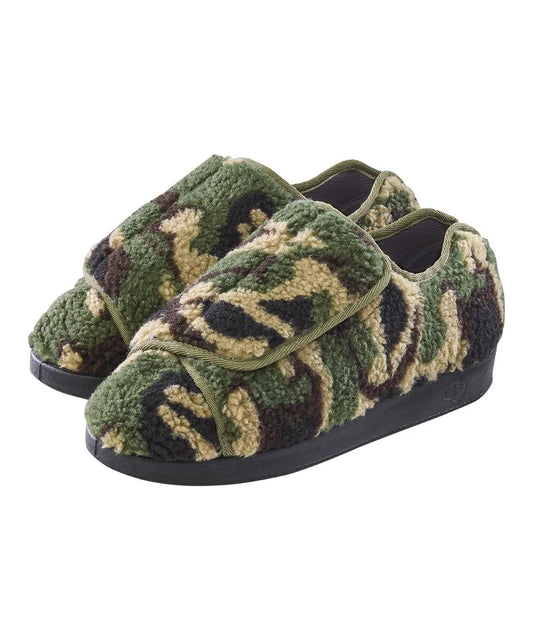Written by: Yanushan Vasikaran
Veterans have proudly and courageously represented their country, often coming back with unique physical challenges that make regular activities, even something as easy as dressing, extremely challenging. For veterans who have experienced limb loss, injury, or recurrent mobility disability, adaptive clothing can significantly improve their daily life. In our article, we review how adaptive fashion benefits veterans by giving them confidence, independence, and comfort in carrying out their daily activities.
This conversation will delve into factors that make clothing veteran-friendly, those that best accommodate injuries and prosthetics, where to find fashion-forward yet functional items, how to modify uniforms to be more comfortable, and where veterans are finding recognition and support through adaptive clothing.
Unique Needs Of Veteran Clothing
Commercially sold clothing cannot sufficiently satisfy a large number of veterans. This incompleteness stems from conditions including amputation, restricted motion, chronic illness, or having scar tissue, which often makes regular clothing unable to sufficiently cater to their needs.
Keep in mind, as a case study, a veteran from the war who wears a prosthetic limb. Regular pants might be a bad fit by virtue of prosthesis size or cause irritation and discomfort. In addition, collared shirts with average buttons might be a challenge with restricted hand motion. Not to mention, some people change from medication or recuperation, making it hard to find a suitable fit.
Additionally, veterans often prioritize strength and dignity among their highest preferences. Clothes that seem overly clinical or boyish might have a detrimental effect on mental health and self-confidence. The general idea emphasizes adaptive clothing, which balances comfort with fashio,n clothing which assists a veteran during his daily existence without hindering his sense of identity and confidence.
Best Adaptive Features For Prosthetics
Prosthetic apparel needs to meet requirements that go beyond stretching abilities. It needs to give wearers a feeling that it's a part of their own body, taking into account individual movement habits, residual limb sensation, and the necessity to offer personalized dressing support.
Some of the most functional adaptive apparel designs, especially created for prosthetic,s are:
1.These are side-zip or side-snap pants, which provide easy access to lower-body prosthetics. Unlike the tricky motion of hoisting pants over a leg or having to step into them, side zippers permit users to spread their pants wide open and then easily zip them up.
2. Magnetic closures: For shirts and jackets, magnetic buttons are a major step forward. People with hand tremors, arthritis, or missing fingers can get dressed by themselves without having to bother with small buttons or zippers.
3. Back-overlap styles are especially popular among wheelchair users or those who are dressed by a caregiver, since they tend to be easy to wear and require little reaching or twisting.
4. Stretchable and flexible materials: The materials are meant to be flexible to fit prosthetics and to alleviate pressure near boundaries. Moreover, air-permeable and long-lasting materials help regulate temperature and friction, a challenge amputees might encounter.
Where To Find Veteran-Specific Adaptive Wear
Now, with increasing recognition being awarded to adaptive clothing, very few stores understand veterans' unique needs. It becomes critical, then, to favor those clothing lines where usability comes as important as fashion, with inclusivity being a guiding tenet.
JuneAdaptive.com is a leading destination to find adaptive apparel that meets veterans' needs. The line has been developed with great care to maintain independence and dignity, featuring stylish products created with usability in mind, helping those who use prosthetics, assistive products, or have restricted motion.
Below are three remarkable products from JuneAdaptive.com that are extremely popular among veterans:
1. Men's Pants with Side Zipper
These pants are specifically meant for veterans who wear leg prosthetics or have restricted motion. The side zipper runs its complete course up or down the length of the pant leg, allowing easy donning and doffing, even from a supine position or a sitting position. The pants material feels smooth but sharply defined, allowing a smooth fit with a streamlined, slim look.

2. Men’s Magnetic Zipper Hoodie
It combines perfectly with functional comfort. It also has a magnetic zipper, auto-closing, to help individuals with restricted hand strength or manual dexterity to easily and independently get dressed. In addition to that, it shows enormous versatility as a seasonal apparel.

3. Women's Recovery Pants with Side Zipper
These pants are a necessity among women veterans who are recovering from surgery or recuperating from lower-body trauma. The side zippers make dressing easy without pain, and there are adjustable waistbands to avoid pressure points. In addition, they are wheelchair-accessible and made from breathable materials.
These products can be bought from JuneAdaptive.com, a store where fashion and accessibility meet to help every person who needs them sincerely.

How To Modify Military Uniforms
Uniforms hold significant symbolic value to many veterans. Even beyond their time of service, veterans might choose to wear particular parts of their uniforms during events, reunions, or just to maintain a sense of identity. It's, however, interesting to note that uniforms are rarely developed with accessibility considerations.
There are a number of ways to alter uniforms by maintaining their look and meaning:
The substitution of standard fastening techniques with magnetic clasps represents a simple modification to help achieve a simplified dressing process with a unified look.
2. Increase number of openings: Professional tailors know how to skillfully add zippers or velcro seams, thus making dressing and undressing a cinch. The feature comes specifically handy to veterans or amputees who are wheelchair users.
3. Choose stretchable materials: For non-dress uniforms, it's a good idea to add stretch panels to allow for movement but still achieve a uniform aesthetic.
4. Use prosthetic-compatible cuts: Have a tailor alter pant legs or sleeves to better fit over or around prosthetic limbs.
If they are unclear where to start, local veterans service agencies often have the resources to suggest adaptive tailors or to help arrange funding for adaptations.
Organizations Helping Veterans Dress
There are several renowned institutions devoted to providing veterans with warm, affordable, and comfortable clothing. There are also a number of institutions that offer veterans with free clothing, tailoring, or monetary help. The institutions listed below are worth considering:
1. The Independence Fund.
This body provides resources, assistive mobility, and care to veterans with catastrophic injuries. In addition, they have gone a step further to partner with adaptive clothing providers to provide veterans with tailor-made clothes specifically adapted to their unique needs.
2. Operation Mend
Affiliated with UCLA, this organization focuses on advanced surgical and psychological care, but also supports patients post-recovery with clothing and accessibility resources.
3. Semper Fi and America's Fund
They also sometimes offer monetary help and support to wounded military personnel by sponsoring adaptive apparel or suggesting brands that sell similar products.
4. Veterans Affairs Local Hospitals and Clinics
Many VA facilities offer help with clothing needs or have the capability to direct veterans to agencies providing aid by way of clothing allowances, tailoring, or associated items.
Styling Tips For Veterans
Veterans deserve to know how it feels to be sharp, stylish, and confident no matter what they are going through. Adaptive fashion should never be dull or look “medical.” The below are some fashion tips meant to help veterans blend fashion with practicality:
1. It should be layered with purpose: Magnetic-zipper hoodies, adjustable vests, and back-overlap tops can be easily layered underneath prosthetics or assistive equipment. Choose something that not just looks great worn alone, but also looks fabulous over a blazer.
2. It's a good idea to choose dark wash or fitted materials since they hide wrinkles better and hold their shape better over time. Many adaptive pants come with these finishes, which add to the overall look.
Embrace accessories to make oneself unique: Accessories, such as military-inspired caps, dog tags, and wristbands, enable veterans to communicate their identity with a sense of practicality.
It might be worth considering a wardrobe with a small variety of high-quality, multi-purpose fundamentals can be easily recombined and re-coordinated. This approach, besides saving time and energy, ensures a good look every day. There needs to be a balance between looks and comfort. Adaptive clothing specifically takes into consideration having a pleasing appearance but doesn't sacrifice comfort.
Final Thoughts
Adaptive clothing, especially that meant for veterans, moves beyond comfort to wear; they are meant to help restore authority, pride, and general comfort. Whether they are recovering from injury, adapting to a prosthesis, or aging with grace, veterans deserve clothing that caters to their unique situations. Stores like JuneAdaptive.com offer perfectly created apparel, and more support groups are helping to further development toward inclusivity to meet people's needs within the field of adaptive apparel. Veterans are no longer faced with having to settle between functional and attractive clothing; they can now have both. If you or a loved one happens to be a veteran who deserves apparel that promotes life quality, never settle for less than what's owed. Consider trying adaptive wear that's all about comfort, ease, and feeling proud because every veteran deserves to wear with honour.
Ready to shop for veteran-friendly adaptive clothing? Explore styles designed for comfort, independence, and confidence at JuneAdaptive.com. Don’t forget to sign up for our newsletter for exclusive tips and resources!















